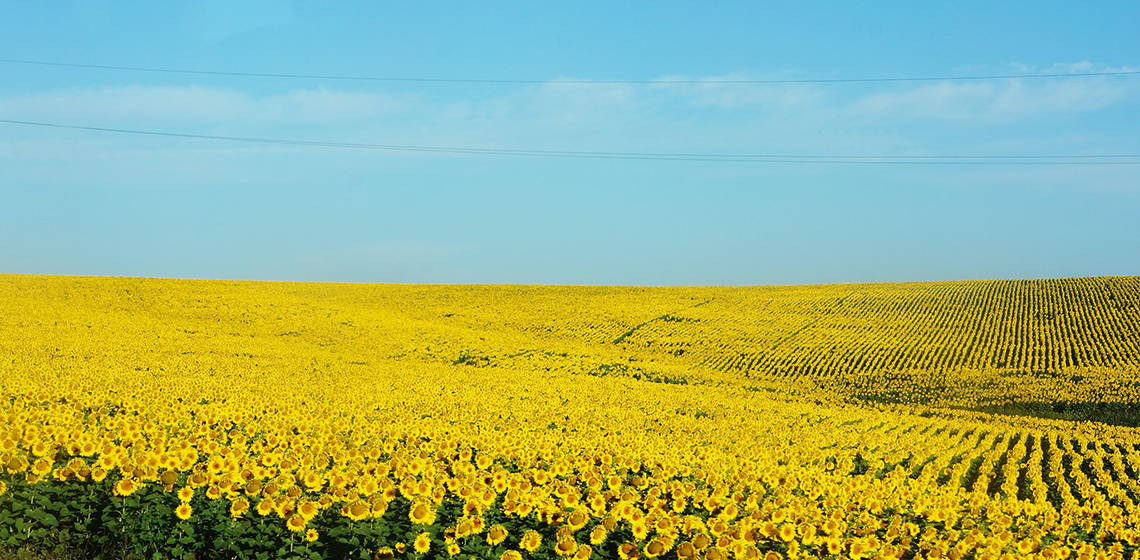Dr Anne Marie Kavanagh, School of Human Development, Dublin City University

Many of us are experiencing a range of emotions as we bear witness to the abhorrent atrocities unfolding in Ukraine. The horrifying graphic images of human suffering alongside tragic personal testimonies from arriving refugee families are eliciting feelings of sadness, helplessness, anger, anxiety and in some cases vicarious grief.
Our capacity to identify with the Ukrainian people has led to an outpouring of compassion and solidarity and a strong desire from many to take action to help. In a world where dominant ideologies encourage individualism, this coming together and overt display of care for and responsibility towards others is heartening.
Many of us have been moved by the bravery and resolve of ordinary Ukrainians. Many have also been moved by the bravery of ordinary Russians who continue to stage anti-war protests despite recent legislative changes which allow for up to 15 years’ imprisonment for such acts.
The exercise of human agency in the most difficult of circumstances is a source of inspiration, particularly for those of us who work in education and are in a position to help. Schools and other educational settings can offer safety, stability, routine, connection with others and the possibility of some semblance of normality for newly arriving Ukrainian families. Adequately resourced schools can organise practical responses including, provision of textbooks, uniforms, transport, language supports (e.g. EAL support, dual language texts) and access to interpreters and psychological services for traumatised children and young people.
Since the early days of the outbreak of war in February, students from Ukraine have joined and been warmly welcomed by school communities throughout Ireland. Examples of informed practice have been generously shared by individual teachers, schools and organisations such as Schools of Sanctuary Ireland. Many teachers, however, continue to feel unsure of how best to support newly arriving students and more broadly how to discuss the conflict with current students without exacerbating feelings of sadness, fear and anxiety and for newly arriving students, additional feelings of loss and trauma.
The remainder of this blog will focus on how we can support newly arriving students by co-creating supportive classroom communities where diverse identities are affirmed and a strong sense of belonging nurtured. It will also focus on how to have ‘difficult’ conversations with students about conflict and war, including how to help students make sense of and process what is going on in Ukraine (to some degree).
I will begin by briefly looking at the challenges students face when acclimatising to a new country.
Every student’s experience of the Ukrainian conflict and the process of re-settlement will be slightly different. They will cope with, adapt to and navigate their new realities in different ways. While some will be excited about starting a new school and making new friends, others will find the enormity of grappling with a new culture, language and school system extremely challenging. At different times, they may all experience feeling of loneliness, isolation, uncertainty, stress and trauma. As there is no universal experience, there is no universal approach to supporting students. However, the below provides some general guidance which should be useful for teachers.
It would be worthwhile for all schools to set aside time at a staff collaborative planning meeting to discuss the aforementioned challenges, including appropriate pedagogical responses and useful resources (see below) and to agree appropriate language for FAQs relating to the conflict.
It is vital that we listen to children and young people and promote approaches that foreground their agency. Tarc (2019) argues that, “Hearing children deepens teachers’ capacities to support and respond to…[them] before, during and in the aftermath of war.” (n.p.).
Scoilnet provides useful “Mo scéal: My story” templates in Ukrainian and Russian for English and Irish language schools. These ‘getting to know’ supports are a useful first step in beginning a wider process of listening to and supporting children’s needs and voices.
In conversation with teachers, where students indicate that it would be helpful, opportunities can be created for interested students to share the story of their war and re-settlement experiences. The mode (art, drama, dance, music, memoir writing etc.) should be at the child’s discretion. Such opportunities are an important recognition of children’s participation rights and an acknowledgement of the value and legitimacy of their voices and experiences.
Many schools already have structures in place to support ‘new arrivals’ from other countries, ranging from whole school intercultural approaches to dimensions of these approaches, like peer buddy systems, clear communication with parents, dual language texts and so on. Some schools provide contact details (and photographs) of bi-lingual parents (e.g. Ukrainian & English) who are happy to act as translators for parents who may speak very little English.
Sharing these supports and resources with teachers in other schools who are less experienced is invaluable. More broadly, the arrival of students from Ukraine provides an opportunity for school communities to think about their intercultural practices more broadly, particularly if they have students from migrant or minoritised backgrounds (e.g. Travellers or Roma students).
An intercultural approach is one that affirms difference, fosters intercultural understanding, promotes equity (e.g. access to high-quality educational resources & academic outcomes for all children), provides space for respectful discussion of important (and often ‘difficult’) social issues and proactively challenges interpersonal and institutional discrimination (e.g. racism) including supporting children’s capacity to recognise and resist these types of injustices.
Due to word count limitations, I will focus on affirming difference and supporting students to discuss ‘difficult’ or ‘controversial’ social issues, in this case, war.
Affirming difference focuses on ensuring that all members of the school community feel seen, valued and respected. This involves setting up one’s classroom to reflect the students in it and wider societal diversity (e.g. books, toys, posters), ensuring your curriculum and resources reflect your students’ lived realities and building strong and trusting relationships with families.
In the context of recently arriving students from Ukraine, it is important that teachers understand the political situation and know the relevant people, digital resources and agencies that will provide additional help. Where possible current students should be prepared for the arrival of new students. They can be encouraged to think about what new students might need help with and to make suggestions about how they can support them (e.g. being kind and helpful, buddy systems, welcoming signs and key words in Ukrainian).
When the students arrive, it is important to spend some additional time on subjects such as SPHE and/or Ethical Education, particularly on activities that nurture a sense of classroom belonging and affirm children’s identities. Where possible, teachers should create opportunities for students to work together in small groups as it encourages participation (as for many it is less intimidating) and helps students to connect as they collectively work towards shared goals.
Supporting students to discuss ‘difficult’ social issues in this context means helping them to make some sense of the war in Ukraine. This in the first instance requires the creation of as safe a space as possible for conversations. One dimension of creating a safe space may be to agree a charter on how children would like to be treated. Another is to discuss and model language for how they can disagree with one another in a respectful way (i.e. challenging ideas rather than individuals).
When discussing any conflict, it is important that the teacher is mindful of the backgrounds of the students in the classroom and of the language used. In discussing this particular conflict, there is potential for creating or perpetuating harmful stereotypes and prejudices. There may be Russian or Belarussian children in the class, school or wider community who may be stigmatised and become targets for exclusion or abuse. It is important to not refer to ‘Russia’s war’ or ‘Russia’s invasion’ but rather Vladimir Putin’s war. Emphasise that many Russians and Belarusians are against the war and are actively protesting against it. Additionally, some of those supporting the war have been manipulated by carefully orchestrated disinformation campaigns.
The general advice for teachers of younger children is that the teacher should not bring up the topic but instead respond to children’s cues and questions about it. Give them space to discuss and share what they are hearing, reading and seeing and how they are feeling about it. Allow them to ask questions and provide the relevant facts. It is important to speak honestly but of course age appropriately. Provide reassurance that they are safe and that many people are working on ending the war and restoring peace. It would be very useful for teachers to focus on picture books that explore related age appropriate concepts that children can relate to their own experiences. For example, circle or thinking time sessions which use picture books that support discussion of, how we treat other people (e.g. kindness, compassion, care), how we can live together in peace and dignity, the potential consequences of our actions, the factors that contribute to the development of conflict at an interpersonal (or local) level, the consequences of a lack of conscience and so on.
With older children, in addition to providing spaces for students to process and discuss the war it is important to discuss war propaganda and fake news, particularly coming from social media sites including Tik Tok and Instagram. Students should be steered towards more reputable websites and provided with opportunities to develop critical literacy skills. In any of these discussions, it is important for the teacher to watch out for cues which signal children’s distress. This is particularly important in classrooms where there are students who may have experienced armed conflict and/or have refugee backgrounds. Images or footage used to support discussion or provoke deep thinking and reflection should be carefully selected and should avoid overly graphic, upsetting or sensational content. There are a range of resources available for preparing lessons that explicitly look at the war through a range of lenses, e.g. historical, geographical (see below).
More broadly, it is immensely valuable to provide students of all ages with opportunities to channel what they are feeling into action, whether it is in the form of anti-war protests, blog or letter writing, creative and artistic responses, fundraising ideas and so on.
Taking action gives hope, even in situations which at times appear hopeless.
Recommended resources for teachers
Padlet of teaching resources about the invasion of Ukraine
Teaching resources to help students make sense of the war in Ukraine
Talking about war with children, lesson plans and resources & social and emotional support
Resources to help navigate students through the war in Ukraine
Talking to kids about the war in Ukraine
How to support your child during conflict and crisis situations
References
Tarc, A.P. (2019, April 15). Children educate teachers with their testimonies from war zones. The Conversation.


